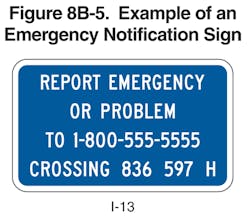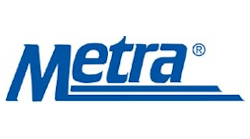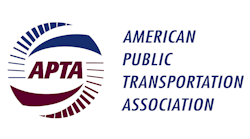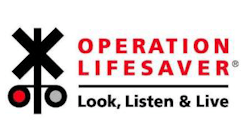Suicide is an unfortunate matter that the transportation industry faces. Federal data has found that in the United States, not only have suicide rates increased, but so have incidents at rail crossings. At the 2018 American Public Transportation Association Rail Conference, in Denver, Colorado, a session addressed both the prevention of rail suicides and trespasser strikes.
Mike McCoy, state coordinator, Colorado Operation Lifesaver, brought up the topic of the emergency notification system sign, which includes the 1-800-555-5555 number available to report any emergencies or problems. The signs also include the specific crossing’s location number. “All intersections in the U.S. have to have one of these signs.”
Colorado Operation Lifesaver also provides additional information, such as videos and radio ads.
“One thing I encourage is for everyone who cares about train and rail safety is to get involved,” said McCoy.
Faced with Rail Interface
Many systems have a cross over with both passenger and freight trains; Metra is one such system. The open system has nearly 700 trains running a day. Hilary Konczal, chief safety and environmental officer for Metra, said that this means that they are faced with the challenges on a daily basis.
“People use the railroad as a shortcut. Our area is the size of Connecticut so there is no way we could patrol 24/7,” said Konczal. “We see a lot of our passengers running around the train if it’s on the opposite side of the track. We try to educate them, but if we can’t we have enforcement officers to provide support.”
Konczal explained that the engineer will first contract dispatch who then contacts the police. Konczal added when these people are given fines and sent to court, it makes them think twice about a repeat offence.
Prevention Training
Training for suicide has become a staple for many agencies. Suicide not only affects riders or those who make the decision, but it also takes an immense toll on the engineers who are involved in such an event. Training to potentially identify a person who seems to be in trouble or looks like they need help, is a strong tool.
Metra introduced a training program in 2015 to help identify the signs of a person who is possible in danger. “The program has been very successful,” said Konczal. “Last year was the first year we could track it and this year we’ve had 30 instances where our employees have intervened to bring these people to safety.”
Metra also held a mental health awareness symposium. “The interesting thing was that we identified it being a community problem …. It was interesting to think about the difference thought process between county and private practice (responses).”
Operation Lifesaver offers agencies materials to use for both within their agencies as well as to get out to the community. Agencies can apply for grants for the funding at oli.org/education-resources




